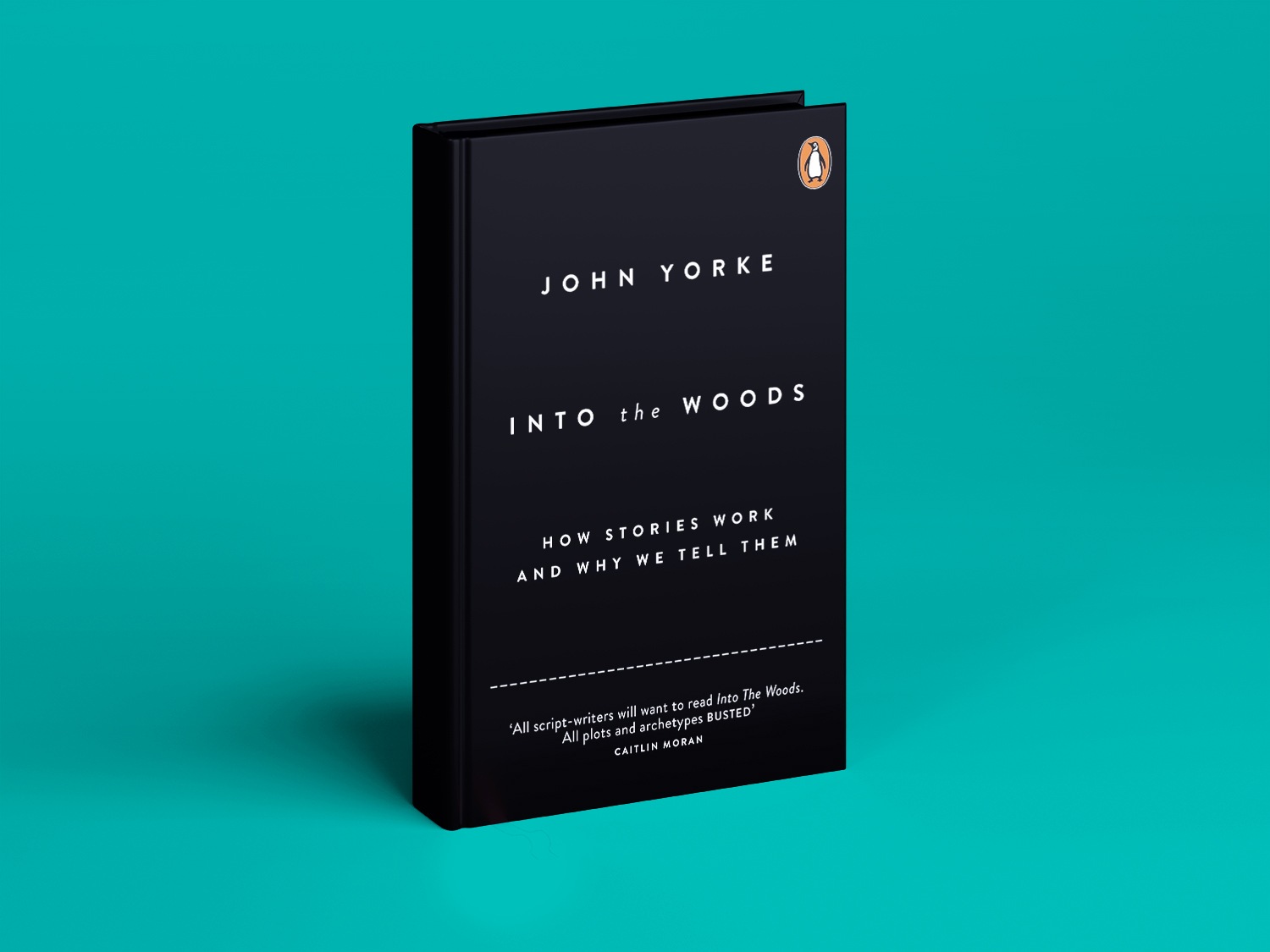‘Into The Woods’ by John Yorke

It’s impossible to do justice to the detail and richness of this book in a few lines.
Below are a few key quotes. Attached are some examples of how Yorke applies his analysis to The Godfather, Thelma and Louise,
The King’s Speech and The Fabulous Baker Boys.
The underlying architecture to story is: A foe is vanquished and order is restored to a community.
Stories throughout the ages have a recurring motif – the journey into the woods to find the dark but life giving secret within.
For us to care for them, all central characters must desire something. A good writer can force us to connect with anyone, as ‘Downfall’ (about Hitler) attests.
Protagonists and antagonists are opposites. They complete each other.
“The more successful the villain, the more successful the
picture.” Hitchcock.
Almost all successful stories are about primal human desires: success, revenge, love, survival, or the protection of one’s family or
home.
What characters desire at the outset is not what they need. Their journey teaches them this.
The essential structural ingredient of drama is “two or three little surprises, followed every now and again by a bigger surprise.”
Christopher Booker identified 5 distinct sections in all stories: call to arms, dream stage, frustration stage, nightmare stage,
thrilling escape from death and resolution.
These five stages follow a simple pattern:
- Set up and call to action.
- Things go well, initial objective achieved.
- Things start to go wrong as forces of antagonism gather strength.
- Things go really badly wrong, precipitating crisis.
- Crisis and climax. Final battle. Resolution for good or ill.
Not only do the first part of act one and the last part of act five mirror each other, but act four becomes a mirror of act two
and one half of the third act, becomes a mirror image of the other.
Change, and the character’s internal struggle, is the essence of all drama.
When Michael Corleone shoots the police captain and the gangster, the conflict between the person he was and the person he will
become, and the act of will it takes to pass from one state to the other, are captured perfectly.
A character’s façade masks the things they fear inside. In fictional terms, their wants are desires they mistakenly believe will make them complete and calm the conflict within.
Citizen Kane seeks to control a world that terrifies him; Gatsby wants wealth to hide his terrible poverty; Tony Soprano exudes violence to mask his vulnerability; and Donald Draper creates a false persona
to bury the completely different person underneath.
These ego defence mechanisms do not bring them happiness.
Whether real or imagined, great characters are consciously or subconsciously at war with themselves.